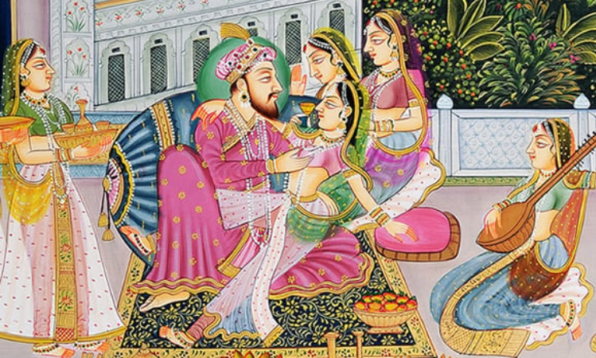When you talk of the Kama Sutra, you immediately think, ‘Oh, it’s just a book of sex positions.’ What if I tell you it’s not? Yes, you heard that right. Kama Sutra is NOT just a book about lovemaking or sex positions. There’s a lot more to this ancient Hindu text. So, what exactly is the Kama Sutra?
What is Kama Sutra?
Kama Sutra is an ancient Sanskrit text compiled by Vatsyayana around the fourth century. It is a comprehensive book covering topics like the art of living a good life, finding a partner, and more. The book was written for young men of wealth in a time when women did not know how to read or write and is basically about how to live your best life. The book is divided into seven parts, each focusing on different things in life.
Part 1 – General Principles
The first part of the Kama Sutra gives a history of kama literature, the three goals of life, i.e. Dharma, Artha and Kama. It also talks about building a house – from finding a good location to arranging the furniture in the house. The first part further talks about the life of a young, well-to-do gentleman, his daily routine, socialisation, and entertainment.
Part 2 – Amorous Advances and Sexual Union

The second part of the text focuses on love and sex. This part expands on the different kinds of love, how to communicate with your partner, how to pleasure them, how to embrace your partner, different types of kissing as well as oral sex, and even expounds on the conversation you should have before you indulge in foreplay. It also talks about biting, lying down and even the appropriate sounds to make while engaging in a sexual act. While this section does explore intimacy and sex positions, its primary focus is on how to place your body rather than the act itself.
Related: Foreplay 101: 9 Tips Every Man Should Know To Please A Woman
Part 3 – Acquiring a wife
The third part of the Kama Sutra focuses on the acquisition of a wife. Finding the right girl, making alliances, earning the trust of the chosen woman, and winning her heart are some topics covered in this section. It also talks about what kind of women to stay away from, one of them being that one should avoid marrying a girl whose name starts with ‘R’ or ‘L’.
Part 4 – Duties and Privileges of the Wife
This section of the ancient text throws light on being a good wife. How should a wife behave in the absence of her husband, what should her conduct be to the other wives, how should a virgin widow who has remarried conduct herself, and how to behave in nuclear and joint families are some of the topics covered under the fourth part of the Kama Sutra.
Part 5 – Other Men’s Wives

This politically motivated part emphasises how to seduce another man’s wife. It talks of human nature and the tendencies of men and women, why women lose interest in their husbands and look outside, how to find a woman to engage in an extramarital affair, finding lovers, and deploying messengers are some of the core subjects of the fifth part of the text.
Part 6 – Courtesans
Written around the same time as Chanakya’s Arthashastra, the Kama Sutra’s sixth part talks about the rights of courtesans. It deals with how courtesans should behave, their laws, how to get money, identifying lovers who are losing interest, reuniting with a former lover, and different types of courtesans.
Part 7 – Occult Practices
The final part of the text is on occult practices and how you can use such practices to subjugate the hearts of others, incite desire, make yourself desirable, and take care of your sexual organs, among other things.
It is not that the Kama Sutra doesn’t talk about sex positions at all; it’s just that there is more to the text. In fact, the original Kama Sutra only had about 18 positions. It is only with later adaptations that thousands of positions were added to the text. Sex educator and author Seema Anand addresses the same in a recent podcast with AfterHours with All About Eve. She also talks about sex education, how to approach the topic of sex with your children and more.
Watch the episode here.
Featured Image Source
Related: 6 Sex Positive Influencers Who Are Breaking Taboos Every Day On Instagram














